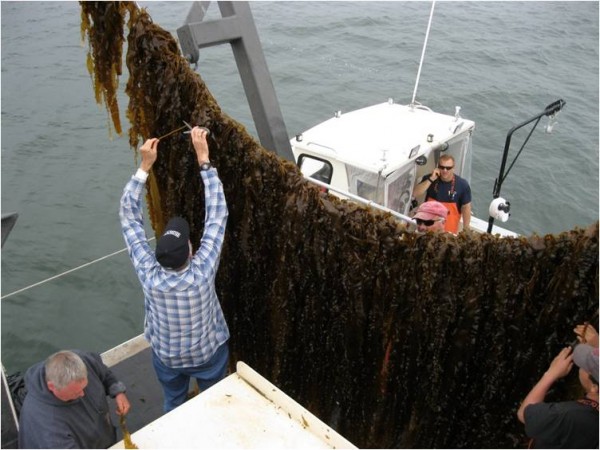
A University of Connecticut seaweed initiative that could be worth as much as $100 million survived yet another test ”“ Hurricane Sandy.
For the past year, UConn researchers and students across multiple disciplines have been studying the growth and profitability of seaweed along the Long Island Sound as a new agricultural niche to create jobs and new businesses in Connecticut.
Few who work along the Connecticut coast can say their work was unharmed by the hurricane. But just as researchers had designed, the university”™s farms off the coast of Fairfield and at the mouth of the Bronx River were uninterrupted by the storm.
Graduate business students working on the project predict the initiative could be worth more than $100 million annually.
Members of the research team are currently developing a business plan to launch a for-profit farm and are working with state lawmakers toward developing legislation that would create a framework for similar projects.
Upon news of Sandy”™s arrival, lead researcher and UConn professor Charles Yarish and his team successfully harvested all of the university”™s crops before the storm hit.
“We got everything in, which is very fortunate,” Yaris said.
On the Friday before the storm, the team pulled in all of its seaweed lines and sent divers out to collect kelp seed that can be planted in the winter.
“Seaweed is robust in dealing with what natural problems we just experienced,” Yarish said.
In fact, the farms are specifically designed to withstand storms, with reports touting oyster barriers ”“ like those employed by the initiative ”“ as potential protection from hurricane surges.
The research team grows and harvests kelp in the winter and spring, red seaweed in the summer, mussels in the fall and spring and oysters, scallops and clams year-round.
While UConn”™s farms were unharmed by the storm, Yarish said the same isn”™t true for Thimble Island Oyster Co., located in Branford and owned by Brendan Smith, who has partnered with the UConn team on the research efforts.
Smith could not be reached for comment, but the company”™s Twitter account reported missing gear, stripped mussel lines and dead oysters and clams.
In a previous interview, Smith told the Business Journal that he lost 80 percent of his crops during Tropical Storm Irene, which drove him to reach out to the UConn research team.
The seaweed initiative has been creating waves across the state and won a $160,000 federal grant in October. In addition to seaweed”™s profitability, it also naturally removes water pollutants such as nitrogen, phosphorous and carbon. The grant, which has been matched with nearly $290,000 in donations, will go toward testing seaweed as a “green solution” to water pollution.
The research team hopes to remove 53 pounds of nitrogen and 343 pounds of carbon at its test sites and see how kelp can be used to enhance the process.
In addition to Thimble Island Oyster Co., the Bridgeport Regional Aquaculture Science and Technology Education Center, Rocking the Boat, and Purchase College in New York state have said they will seek to work with the UConn research team.




















